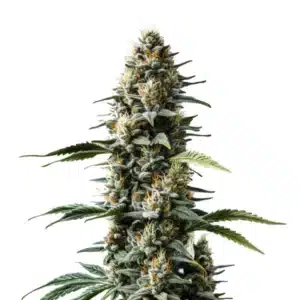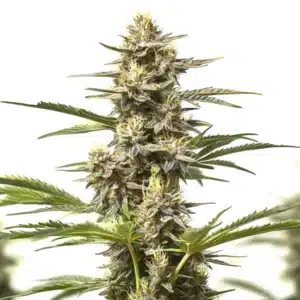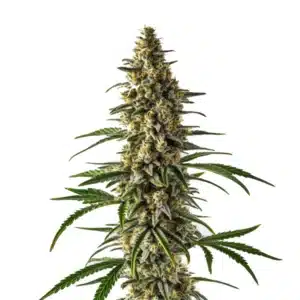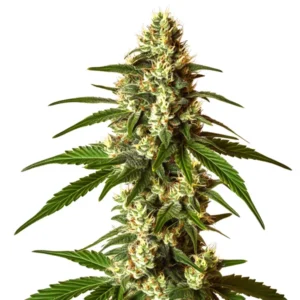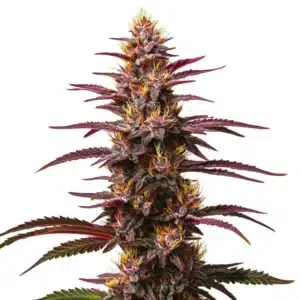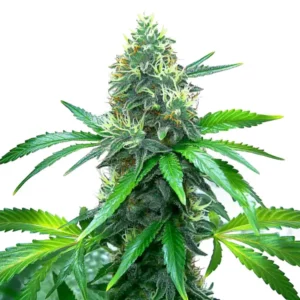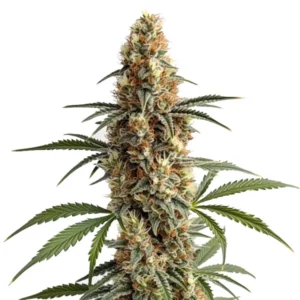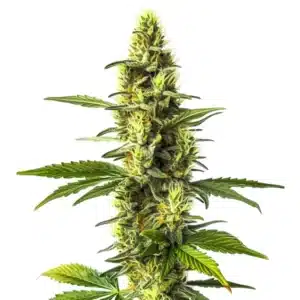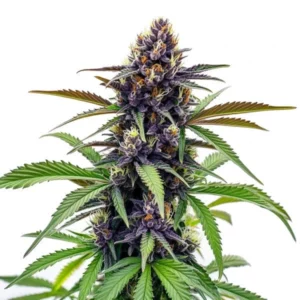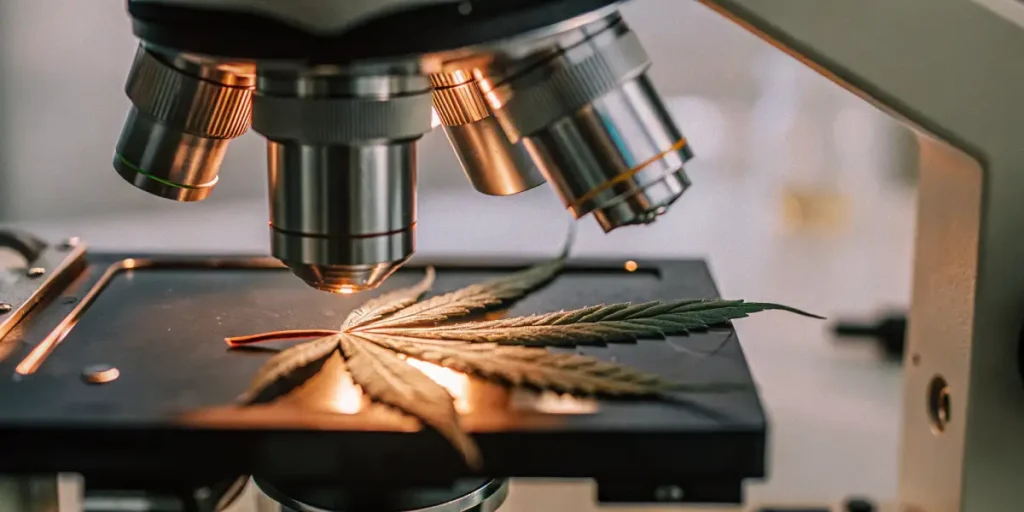
Cannabis Oxidative Stress Explained
Cannabis oxidative stress explained is a crucial topic for both novice and seasoned growers. It occurs when there’s an imbalance between free radicals and antioxidants in the plant. This imbalance can lead to cellular damage. In cannabis cultivation, oxidative stress is a silent adversary that can impact plant health and yield.
Dealing with oxidative stress in cannabis cultivation requires a good grasp of the plant’s biology and environment. Free radicals, which are unstable molecules, can damage cells by stealing electrons. Antioxidants are the plant’s defense, neutralizing these free radicals. When the balance tips, oxidative stress takes hold, causing harm to the plant.
Recommended Strains
Skunk Auto
|
|
THC | 10% - 15% (Low) |
|
|
Type | Autoflowering |
|
|
Yield | Medium |
|
|
Phenotype | 70% Indica / 30% Sativa |
Blue Dream
|
|
THC | 17% - 24% (Medium) |
|
|
Type | Feminized |
|
|
Yield | High |
|
|
Phenotype | 50% Indica / 50% Sativa |
Learning about cannabis oxidative stress mechanisms is vital. These mechanisms allow plants to cope with various environmental pressures. When oxidative stress is unchecked, it can lead to stunted growth, poor yield, and even plant death. By knowing these processes, growers can take proactive steps to safeguard their crops.
Impact of Oxidative Stress on Cannabis Plants
The impact of oxidative stress on cannabis plants can be significant. It affects the plant’s ability to perform photosynthesis, the process by which plants convert light into energy. When oxidative stress occurs, photosynthesis efficiency drops, leading to less energy for growth and flower production.
One practical example is when cannabis plants are exposed to high-intensity light without adequate nutrients. This scenario can exacerbate oxidative stress, causing leaf discoloration and reduced growth. Strains like Skunk Auto are more resilient under such conditions, showing how genetics play a role in stress response.
Oxidative stress in cannabis cultivation can also affect the plant’s immune system, making it more susceptible to pests and diseases. The weakened state of the plant due to stress compromises its natural defenses, leading to increased vulnerability. By knowing the impact of oxidative stress on cannabis plants, growers can implement preventive measures to maintain plant health.
Furthermore, oxidative stress can influence the plant’s secondary metabolite production, including cannabinoids and terpenes. These compounds are essential for the plant’s aroma, flavor, and therapeutic properties. Ensuring that oxidative stress is managed effectively can lead to higher quality cannabis with enhanced potency and desired characteristics.
Promos & Deals
Cannabis Plant Stress Response Pathways
Cannabis plant stress response pathways are the series of reactions that help plants cope with stress. These pathways involve signaling molecules that activate defenses. When oxidative stress is detected, the plant ramps up its antioxidant production to counteract the damage.
These pathways are crucial in determining how well a cannabis plant can withstand adverse conditions. For example, environmental triggers like drought, excessive heat, and nutrient deficiency all activate these pathways. By optimizing growing conditions, the pathways can function effectively, maintaining plant health.
Knowing cannabis oxidative stress mechanisms involves exploring how plants perceive stress signals and translate them into protective actions. This knowledge allows growers to predict how plants will react under stress and make informed decisions to enhance their resilience. Effective management of these pathways is essential for successful cultivation.
Moreover, research into cannabis plant stress response pathways continues to uncover new insights into how these mechanisms work. Advances in genetic studies and biotechnology offer promising avenues for developing stress-tolerant strains. This ongoing research highlights the importance of knowing and leveraging these pathways for improved cannabis production.
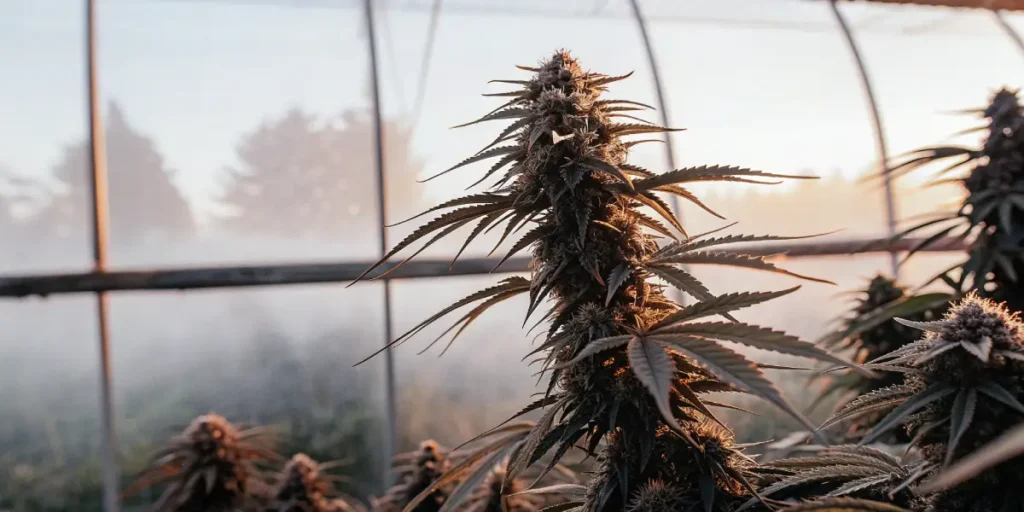
Mitigating Oxidative Stress in Cannabis Growth
Mitigating oxidative stress in cannabis growth involves several strategies. Maintaining optimal growing conditions is the first step. Providing adequate light, water, and nutrients ensures that the plant’s defenses are not overwhelmed. Balancing these elements is key to reducing stress.
Another effective strategy is selecting strains with inherent resilience. For instance, Blue Dream is known for its adaptability and resistance to stress. This strain can tolerate variations in light and temperature, making it ideal for growers seeking reliability.
Implementing integrated pest management practices can also play a role in mitigating oxidative stress in cannabis growth. By controlling pest populations and minimizing their impact, growers can reduce additional stressors on the plants. A healthy and balanced environment supports the plant’s natural ability to manage oxidative stress.
Educational resources and training programs for growers are invaluable in helping them understand cannabis oxidative stress explained and how to tackle it effectively. By keeping up with the latest research and cultivation techniques, growers can continuously improve their approaches to managing oxidative stress, leading to more robust and productive cannabis crops.
FAQ Section
What are cannabis oxidative stress mechanisms?
Cannabis oxidative stress mechanisms refer to the plant’s internal processes that manage stress caused by free radicals. These mechanisms involve a balance of antioxidants that neutralize harmful molecules. When these mechanisms are functioning well, they protect the plant from damage.
Knowing these mechanisms helps growers take preventive measures. For instance, ensuring plants receive adequate nutrients supports these mechanisms. Healthy plants can then better withstand stressors such as high light intensity or nutrient deficiencies.
These mechanisms are part of a complex network that includes various enzymes and metabolic pathways. Each component plays a specific role in detecting and responding to oxidative stress, ensuring the plant’s survival under challenging conditions. By exploring these mechanisms, researchers can develop targeted strategies for enhancing plant resilience.
Additionally, cannabis oxidative stress mechanisms are influenced by external factors such as environmental conditions and cultivation practices. By optimizing these factors, growers can enhance the effectiveness of these mechanisms, resulting in healthier plants and higher yields.
How does oxidative stress affect cannabis growth?
Oxidative stress affects cannabis growth by hindering photosynthesis and nutrient absorption. When plants experience oxidative stress, their ability to generate energy is compromised. This leads to slower growth rates and reduced yields.
Growers should monitor environmental conditions to minimize stress. Adjusting light levels and ensuring proper watering can help maintain the balance needed for healthy growth. Choosing resilient strains like those from Blimburn Seeds can also mitigate the effects.
The impact of oxidative stress on cannabis plants can also manifest in reduced root development. Healthy roots are essential for nutrient uptake and overall plant stability. By addressing oxidative stress, growers can promote strong root systems, which are vital for sustained plant health and productivity.
Furthermore, cannabis plants under oxidative stress may exhibit altered growth patterns, such as abnormal leaf and stem development. These changes can affect the plant’s overall structure and ability to support heavy flower production. By managing oxidative stress, growers can ensure uniform growth and maximize their harvest potential.
Can certain cannabis strains resist oxidative stress better?
Yes, certain cannabis strains have better resistance to oxidative stress. These strains possess genetic traits that enhance their stress response pathways. They are able to produce higher levels of antioxidants, effectively combating stress.
For instance, strains like Skunk Auto and Green Crack are noted for their resilience. They can better withstand environmental fluctuations, making them ideal for varied growing conditions. Selecting such strains can lead to more successful cultivation outcomes.
The genetic basis for stress resistance in cannabis strains is a topic of ongoing research. By knowing the underlying genetic factors, breeders can develop new varieties that offer improved stress tolerance. This knowledge is crucial for advancing the field of cannabis cultivation and ensuring crop success.
Besides to genetic traits, the cultivation environment plays a significant role in a strain’s ability to resist oxidative stress. By providing optimal conditions, growers can enhance the natural resilience of these strains, leading to healthier and more productive plants.
What practical steps can growers take to reduce oxidative stress?
Growers can reduce oxidative stress by optimizing environmental conditions. Ensuring proper light intensity, temperature, and humidity levels is crucial. Nutrient management is also essential, as deficiencies can exacerbate stress.
Additionally, choosing the right strains and possibly using antioxidant supplements can make a difference. These practical steps help maintain the plant’s natural defenses, leading to healthier growth and better yields.
Implementing regular monitoring and assessment routines allows growers to identify and address oxidative stress early. By using tools such as soil moisture meters and light intensity gauges, growers can make data-driven decisions to fine-tune their cultivation practices, reducing stress and enhancing plant health.
Furthermore, fostering a supportive growing environment includes maintaining proper air circulation and minimizing stress from external factors like pests and diseases. By taking a holistic approach to cultivation, growers can effectively reduce oxidative stress and promote robust plant development.
Why is it important to address oxidative stress in cannabis cultivation?
Addressing oxidative stress in cannabis cultivation is important because it directly impacts plant health and yield. Unchecked stress can lead to significant losses in both quality and quantity of the harvest. It also poses a risk of plant death in severe cases.
By knowing and managing oxidative stress, growers can ensure robust plant development. This proactive approach leads to higher yields and more potent crops, making it a critical aspect of successful cannabis cultivation.
The importance of addressing oxidative stress extends beyond yield and quality. By maintaining plant health, growers can reduce the need for interventions, such as pesticides and additional nutrients, leading to more sustainable cultivation practices. This approach benefits both the environment and the grower’s bottom line.
Moreover, knowing cannabis oxidative stress explained can pave the way for future innovations in cultivation techniques. As the industry evolves, knowledge of oxidative stress and its management will be crucial for developing new methods that enhance efficiency and productivity in cannabis agriculture.


